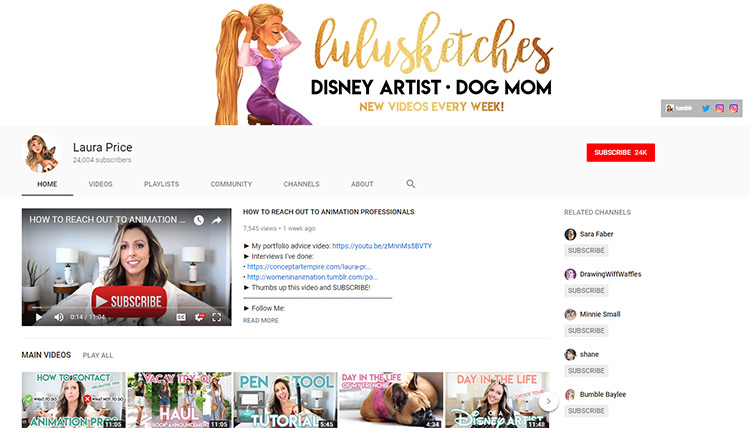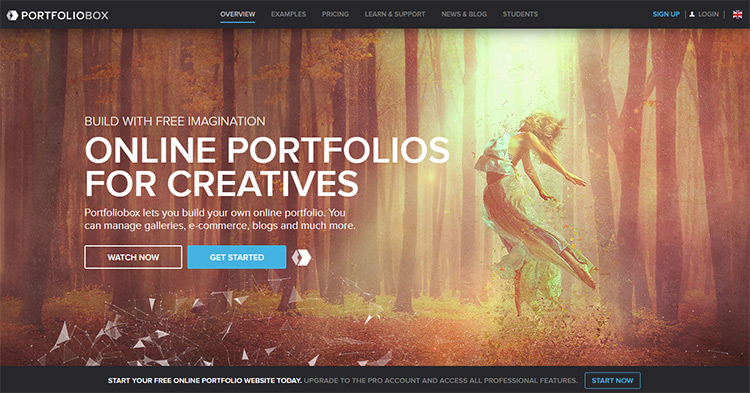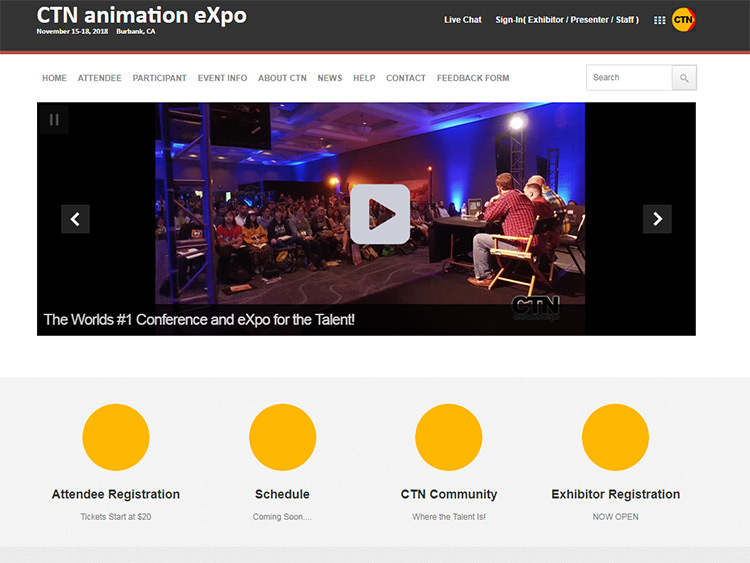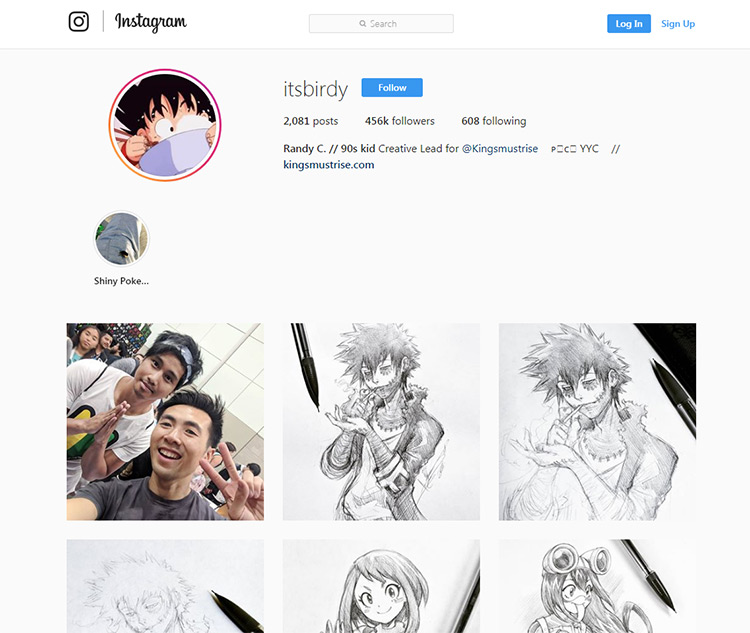Marketing For Artists: Tips To Get Your Work Out There
Many creative people see the term “marketing” as a dirty word.
But really it’s just a process of getting your name and your work out there. Marketing doesn’t have to involve annoying ads or spamming anyone’s inbox. When done properly marketing is enjoyable, creative, and often times doesn’t even look like self-promotion.
So how does an artist go about marketing themselves? How can you get more attention to your work and attract new clients?
This guide doesn’t have all the answers but it’s a solid starting point.
If you’re willing to put in some time and push your content to the masses you can see results fast. Most of the time you can even see those results just from behind your computer screen.
Get On Social
This may be an obvious statement but it bears stating.
Get your artistic butt on social media. Get on all the channels that you’ll use and stick to them.
At a minimum I’d suggest Twitter and Instagram. These are both wildly popular networks that have a worldwide userbase.
This means large exposure to people from all over the world and from many different backgrounds. Plus they’re mostly push-oriented networks which means you go on there to push content out to followers.
Both Twitter & Instagram support hashtags which give people a way to find your work by searching. This is incredibly powerful and it’s one of the best ways to increase followers fast.
A few other networks you might consider:
- ArtStation
- DeviantArt
- Tumblr
- YouTube
- Facebook(page)
The toughest network to break into is YouTube for sure.
Creating video content is not easy but it can be very rewarding.
Disney artist Laura Price does a lot of work on her art YouTube channel and it’s been a great marketing tool for her work. We recently published an interview with Laura if you wanna learn more about her marketing strategy.

For the other networks I listed above you’re mostly trying to push out content.
A Facebook page is mostly there for pushing content to loyal fans. Same with Tumblr. And ArtStation, DeviantArt, Behance, and many others.
Just get your profiles setup and use the ones you feel most comfortable. Over time as you gain a following you can branch into other networks that you’d want to use.
But an online social following is basically a prerequisite to gain any sort of momentum as an artist these days.
If you don’t use social then you’re competing against people who do. Guess who’s gonna get more attention.
Get Your Own Website
Working with social media is great but it’s never a replacement for a solid portfolio website.
Tumblr is nice but you really need your own webpage with your own domain name.
This looks much more professional and gives you a way to curate only your best work into a single portfolio.
That way you can publish all your sketches, WIPs, and experimental stuff on your social networks. Keep your website job-oriented with a focus on your finest pieces.
We have a detailed guide on launching your own portfolio and it really is so easy that anyone could do it.
WordPress makes it stupid simple for anyone to publish and edit content for their site. Not to mention all of the free WordPress themes for art portfolios you can find online.
If you don’t like WordPress for whatever reason then definitely look into Portfoliobox. They offer a self-hosted alternative that’s super easy to setup and customize. Plus they give you a domain name so that’s really the better option for non-techie artists.

We wrote a very detailed guide to Portfoliobox if you wanna see what it can offer.
Also readers of Concept Art Empire get a 5% discount for life with the Portfoliobox pro plan. So that’s a pretty sweet deal if you like their setup.
But regardless of what platform you work with there’s another looming question: how soon should you launch a portfolio website? This is a tough one to answer.
I would say put up your own website once you’re ready to accept work. This could be freelance work or smaller commissions, or maybe you’re looking to work in a studio setting.
Whatever the case may be, once you’re ready to trade your art for money then you’re ready for a professional website.
Reach Out To Others
When landing work and getting anywhere in life you’ll often hear the phrase “it’s who you know”.
That phrase has remained true for centuries and it’s still accurate to this day. Who you know can make a world of difference.
It’s easier now than ever to connect with artists via the Internet too. But that’s nothing like meeting face-to-face and it never has the same impact.
Still I would highly recommend making time to connect with other artists in a genuine way, even if it’s mostly digital. Send a tweet praising their recent piece of art. Or ask what kind of art supplies they used in a watercolor sketch.

You don’t need to “make up” reasons to connect with other artists. But if you can think of some valid reasons to reach out then don’t hesitate.
The one thing you want to avoid is annoying other artists with incessant questions or requests for tutoring.
Asking a professional to critique your piece may be acceptable. Begging that person many times to critique multiple pieces will likely alienate them. Find some common ground that benefits the other person and makes you come off in a good light.
Basically: people like knowing other people who are awesome.
If you’re an awesome person then show it! Don’t be stalker-y but don’t be timid either.
This advice can feel pretty vague but it’s accurate for connecting with people in a genuine way. Over time you can even build a community of artists you talk to on a regular basis for sharing tips, advice, ideas, or collaborations.
I would also highly recommend getting to meet artists in your area, your field, or at your skill level.
This is easier than you’d think.
If you search online you can find local art classes or figure drawing classes at a reasonable price. Join these and connect with some artists you vibe with. Share tips. Swap emails/phone numbers. Stay in touch.
It may seem small but these connections make a difference in the long term.
Also consider going to art conferences or conventions related to your field. For example CTN Expo is a huge gathering for animation students and professional animators alike.

If you’re interested in animation then try to save up for a ticket. The people you meet probably don’t live in your area but they can prove to be valuable contacts and blossom into great friendships.
The more people you know, the larger your social circle. That means more people willing to share your artwork with their followers & their social group.
From there it’s pretty easy to let word-of-mouth marketing run on its own.
Design A Fun Project(And Get It Viral!)
This last tip is something that really seems to work if you can nail it.
Start by thinking of ideas related to the art you already create. Comics, cartoons, illustrations, concept art, whatever.
Brainstorm a series of pieces you could design, or a type of “audience-based” project that could go viral.
Something that’s unique that would really grab attention from a specific community.
My go-to example is the amazing work from @itsbirdy on Instagram.

He does these incredible colored pencil drawings of Pokémon wearing outfits of other monsters. Really creative, nicely executed, and most of his artwork has been shared around the Pokémon community for years.
Here’s a funny example of Pikachu and Stitch wearing outfits of each-other. Brilliant.
Draw a cool series of related artwork or make a really insightful comic relevant to a rabid fanbase. Or try painting concept art for video game crossovers. Redesign your own concept art from very popular video games.
Submit your work into forums and related art subreddits.
There’s a huge list of “imaginary” subreddits that specialize in paintings of imaginary characters, environments, props, creatures, everything.
The idea here is simple: create some work that’ll basically do the marketing for you. Make something that people will see and think “wow I want to share this!”
Just make sure your name is on it or include a link to your website/social accounts. This is really the best way to keep the credit on you and develop a larger following.
While we can study and find many similar traits for content that goes viral, there is no foolproof formula. It’s a lot of trial and error with a dash of luck.
But this is a really cool strategy to get out there and make a name for yourself as an artist.
This works in many related fields too and it’s even happened somewhat recently in the entertainment industry.
Writer Billy Domineau created a spec script for Seinfeld revolving around 9/11. It went viral.
A few months later he was hired onto Family Guy as a staff writer.
I’m not saying if you paint some concept art for Final Fantasy you’ll get hired by Square-Enix or Nintendo. But if your artwork goes viral and strikes a cord in the gaming industry then you’re potentially one step closer to getting your artwork in front of people who might hire you.

The key to shareable marketing is quality content + unique value.
Create artwork of value and stand out from the masses. Produce things that are truly your own and don’t be afraid to get stuff out there in front of people.
Also keep in mind that marketing is a creative field much like art.
Take the ideas above and combine them with your own creative solutions. See if you can come up with an even better marketing plan that can truly benefit your work.












